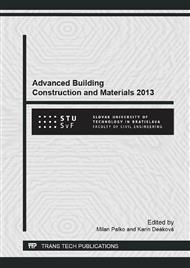p.19
p.25
p.31
p.35
p.39
p.43
p.47
p.52
p.57
Energy Efficiency of Building Envelopes
Abstract:
Energy efficiency of buildings is one of the basic requirements of current architectural engineering. The new recast of the Energy Performance of Buildings Directive (EPBD) calls for all new buildings to be nearly zero energy buildings by the end of 2020. To achieve this target is quite challenging. Nowadays some of the buildings that are realized are reaching these objectives. The current market is able to offer a wide range of thermal systems and thermal insulation materials themselves and the right choice of thermal system or thermal insulation material is a difficult task. Considering the significant impact that energy consumption has, is particularly important to implement policies aimed at improving energy efficiency in buildings. Highly energy efficient buildings can either save primary energy or disseminate the use of the most suitable technologies to be used in new constructions. The building may be considered as an example to study and optimize the benefits of higher energy efficiency together with the use of renewable energy systems. This article is going to discuss the characteristics of these solutions, trends in their research and development and their conceptual bases.
Info:
Periodical:
Pages:
39-42
Citation:
Online since:
December 2013
Authors:
Price:
Сopyright:
© 2014 Trans Tech Publications Ltd. All Rights Reserved
Share:
Citation:


